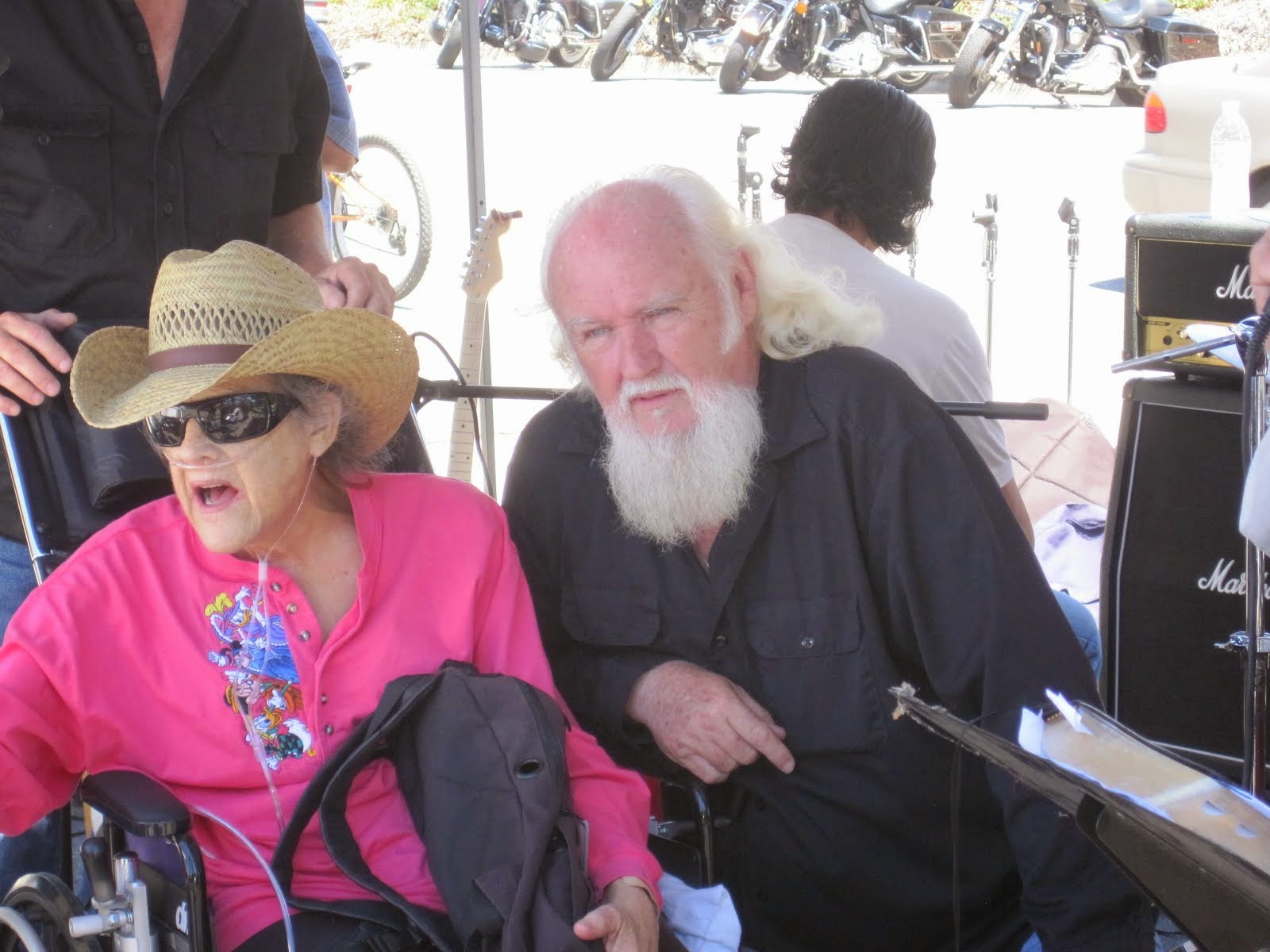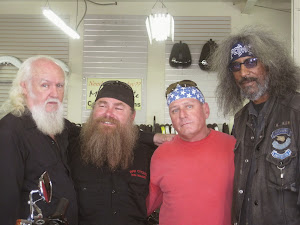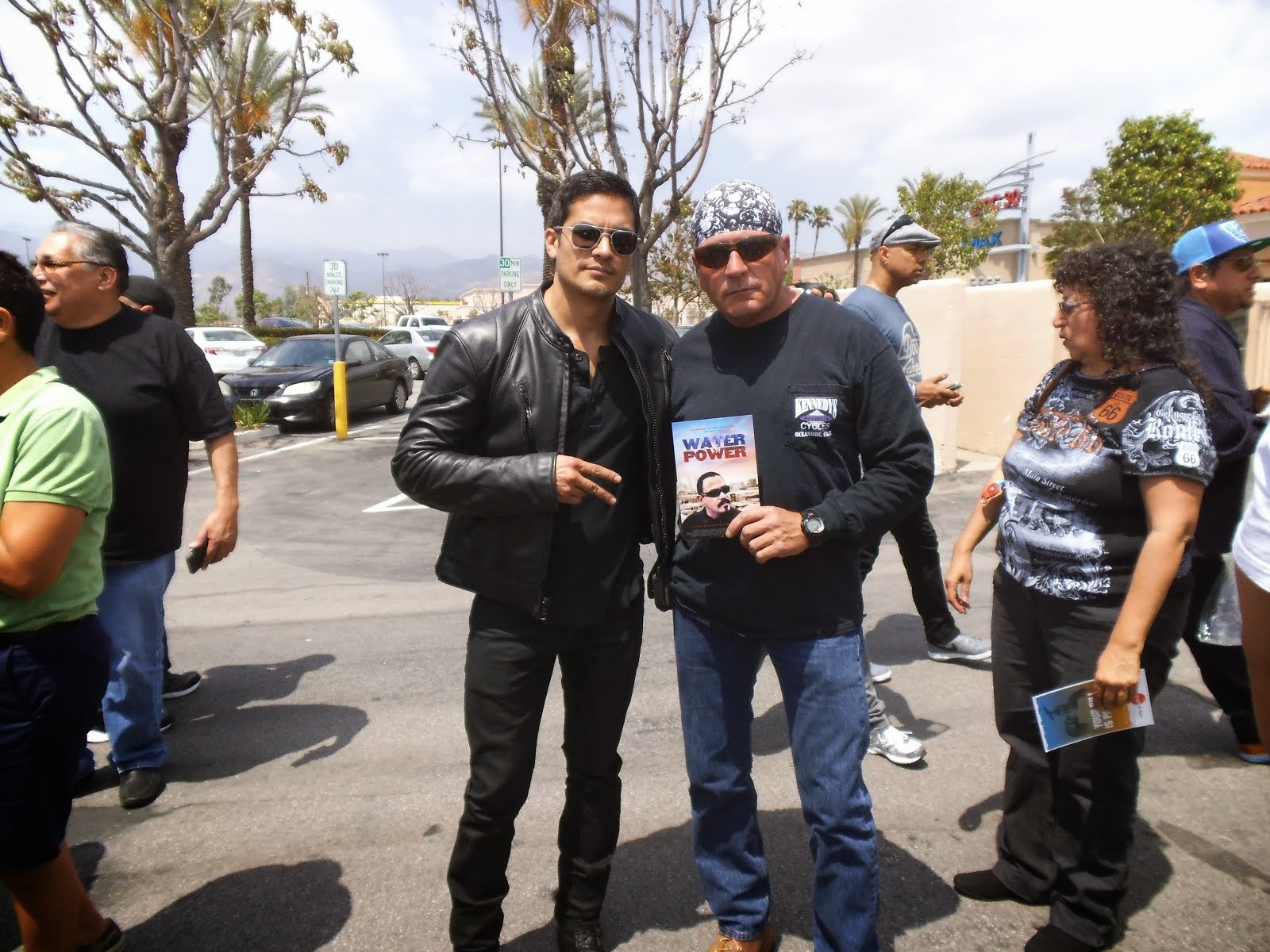OFF THE WIRE
NTSB PRESS RELEASE
************************************************************
National Transportation Safety Board
Washington, DC 20594
FOR IMMEDIATE RELEASE: November 16, 2010
SB-10-44
************************************************************
NTSB ADDS MOTORCYCLE SAFETY TO MOST WANTED LIST;
REMOVES RECREATIONAL BOATING
************************************************************
The National Transportation Safety Board today updated its
Most Wanted List of Transportation Safety Improvements
directed at state governments by adding a new issue area -
motorcycle safety - and dropping another - recreational
boating - where substantial progress has been made. The
changes were announced today at a press conference in
Washington, D.C.
"State governments are in a unique position to effect the
most significant improvement in certain areas of
transportation safety," NTSB Chairman Deborah A.P. Hersman
said. "Our Most Wanted List spotlights those states that
have made noteworthy progress in better protecting the
traveling public - and those that have not."
Highlights of the Board's actions announced today follow.
Improve Motorcycle Safety
The NTSB added this new issue area to the list. From 1997
through 2008, the number of motorcycle fatalities more than
doubled during a period when overall highway fatalities
declined. Although the number of motorcycle fatalities fell
in 2009, the 4,400 deaths still outnumber those in aviation,
rail, marine and pipeline combined.
According to the U.S. Department of Transportation, head
injury is the leading cause of death in motorcycle crashes.
The NTSB therefore recommends that everyone aboard a
motorcycle be required to wear a helmet that complies with
DOT's Federal Motor Vehicle Safety Standard 218. Currently,
20 states, the District of Columbia and 4 territories have
universal helmet laws that apply to all riders. Twenty-
seven states and one territory have partial laws the require
minors and/or passengers to wear helmets. Three states -
Iowa, Illinois and New Hampshire - have no helmet laws.
Eliminate Distractions for Young Drivers
Motor vehicle crashes are the leading cause of death for
people aged 15-20. Teen drivers represent on average less
than 7 percent of the driving population but account for
more than 13 percent of drivers involved in deadly crashes.
To improve the environment and decrease the crash risk for
teenagers, NTSB recommends that states implement a
comprehensive graduated driver licensing (GDL) system.
GDL systems consist of three stages - a learner's permit, an
intermediate or provisional license, and a full license -
and places restrictions on these young, novice drivers to
limit their distractions. Such distractions include
restricting the number of passengers that teen drives can
carry and restricting their use of interactive wireless
communication devices. Although 49 states and the District
of Columbia have strengthened their driver licensing systems
in the past decade, only 15 states have included all the
elements that the NTSB recommends. Thirty-four states lack
some elements, and North Dakota does not have a 3-stage GDL
system.
The risk of a crash involving a teenage driver increases
with each additional teen passenger in the vehicle. In
addition, conducting a conversation on a wireless telephone
or texting can decrease situational awareness, especially
for someone who is still learning to deal with a myriad of
traffic conditions and situations. NTSB recommendations are
aimed at eliminating these distractions for young, novice
drivers.
Twenty-two states lack passenger restrictions for novice
drivers that would satisfy NTSB recommendations, and 24
states have no ban on interactive wireless communication by
drivers with learner's permits or intermediate licenses.
Improve Child Occupant Protection
About 45 percent of the 3,000 children between the ages of 4
and 8 who died in motor vehicle accidents (2000-2009) were
unrestrained. The NTSB recommends that states require that
children younger than 8 but too large for child safety seats
be restrained in booster seats. Twenty one states and two
territories need to enact or amend laws to satisfy this
recommendation.
Enact Primary Seat Belt Enforcement Laws
In 2009, 55 percent of the 23,000 people who died as
occupants in auto crashes were not wearing seat belts.
Using lap/shoulder belts reduces the risk of fatal injury to
front seat passengers by 45 percent and the risk of
moderate-to-critical injury by 50 percent. The NTSB
recommends that all states enact primary seat belt
enforcement laws. Nineteen states still lack such laws, and
14 states and 2 territories that have primary enforcement
laws need to expand them to all seating positions.
Eliminate Hard Core Drinking Driving
The nation's deadliest drunk driving accident occurred 22
years ago, when a drunk driver hit an activity bus head-on
in Kentucky, killing 27 people. The driver had a history of
impaired driving convictions, and had a blood alcohol level
of 0.26 percent that night. Since 2001, more than 81,000
persons have been killed by hard core drinking drivers. The
NTSB recommends an 11-step model program to combat this
deadly epidemic. Six states (California, Nebraska, New
Hampshire, Ohio, Utah and Virginia) have a sufficiently
rigorous program that the NTSB considers acceptable action.
However, 23 states have achieved insufficient progress on
the issue. The remaining states and territories have
partially complied with the recommendation.
Enhance Recreational Boating Safety
Almost 700 people die every year in recreational boating
accidents in the United States. In 1994, the NTSB added
this issue area to the Most Wanted List, asking the states
to require personal flotation devices for children and
implement training and licensing requirements for their
recreational boaters. Since that time, 70 percent of the
states have responded favorably to those recommendations.
The NTSB has removed this issue from the Most Wanted List,
but will continue to push for action in the remaining
states.
Chairman Hersman closed today's press conference by noting
that someone dies in a traffic crash in this country every
13 minutes. "The number of people who die every week on our
roadways (650) is equivalent to five 737 passenger jets
crashing every seven days. If that many people were killed
in airplane crashes, the American people would be up in
arms," Chairman Hersman said. "Although highway fatalities
declined last year, we still need a call to arms to reduce
the number of these daily, needless tragedies on our
highways."
A complete package explaining state actions on all these
recommendations, including easy-to-follow maps, is available
on the Board's website at
http://www.ntsb.gov/Recs/mostwanted/state_issues.htm.
NTSB Media Contacts: (202) 314-6100
Improve Motorcycle Safety -- Terry Williams,
williat@ntsb.gov
Distractions for Young Drivers - Keith Holloway
hollowk@ntsb.gov
Occupant Protection - Bridget Serchak
bridget.serchak@ntsb.gov
Hard Core Drinking Driving - Peter Knudson
peter.knudson@ntsb.gov
Recreational Boating - Keith Holloway hollow@ntsb.gov
skip to main |
skip to sidebar




Bill & Annie

Art Hall & Rusty


NUFF SAID.......


































































OOHRAH

ONCE A MARINE,ALWAYS A MARINE

GIVING BACK


MOUNT SOLEDAD














BIKINI BIKE WASH AT SWEETWATER










FRIENDS





BILL,WILLIE G, PHILIP










GOOD FRIENDS


hanging out

brothers


GOOD FRIENDS

Good Friends

Hanging Out




Bill & Annie
Art Hall & Rusty
Art Hall & Rusty


NUFF SAID.......



















NUFF SAID......



























Mount Soledad




BALBOA NAVAL HOSPITAL
RUSTY DANNY

ANNIE KO PHILIP

PHILIP & ANNIE

OUT & ABOUT

OOHRAH...

OOHRAH
ONCE A MARINE,ALWAYS A MARINE

ONCE A MARINE,ALWAYS A MARINE
American Soldier Network GIVING BACK

GIVING BACK
CATHY & BILL
PHILIP & DANNY & BILL

MOUNT SOLEDAD
bills today
EMILIO & PHILIP
WATER & POWER
WATER & POWER
bootride2013



BIKINI BIKE WASH AT SWEETWATER







ILLUSION OPEN HOUSE

FRIENDS


GOOD FRIENDS



BILL,WILLIE G, PHILIP









GOOD FRIENDS

GOOD FRIENDS
Friends
- http://www.ehlinelaw.com/losangeles-motorcycleaccidentattorneys/
- Scotty westcoast-tbars.com
- Ashby C. Sorensen
- americansoldiernetwork.org
- blogtalkradio.com/hermis-live
- davidlabrava.com
- emiliorivera.com/
- http://kandymankustompaint.com
- http://pipelinept.com/
- http://womenmotorcyclist.com
- http://www.ehlinelaw.com
- https://ammo.com/
- SAN DIEGO CUSTOMS
- www.biggshd.com
- www.bighousecrew.net
- www.bikersinformationguide.com
- www.boltofca.org
- www.boltusa.org
- www.espinozasleather.com
- www.illusionmotorcycles.com
- www.kennedyscollateral.com
- www.kennedyscustomcycles.com
- www.listerinsurance.com
- www.sweetwaterharley.com

Hanging out

hanging out
Good Friends

brothers
GOOD FRIENDS

EMILIO & SCREWDRIVER

GOOD FRIENDS
Danny Trejo & Screwdriver

Good Friends
Navigation
Welcome to Bikers of America, Know Your Rights!
“THE BIKERS OF AMERICA, THE PHIL and BILL SHOW”,
A HARDCORE BIKER RIGHTS SHOW THAT HITS LIKE A BORED AND STROKED BIG TWIN!
ON LIVE TUESDAY'S & THURDAY'S AT 6 PM P.S.T.
9 PM E.S.T.
CATCH LIVE AND ARCHIVED SHOWS
FREE OF CHARGE AT...
BlogTalkRadio.com/BikersOfAmerica.
Two ways to listen on Tuesday & Thursday
1. Call in number - (347) 826-7753 ...
Listen live right from your phone!
2. Stream us live on your computer: http://www.blogtalkradio.com/bikersofamerica.
A HARDCORE BIKER RIGHTS SHOW THAT HITS LIKE A BORED AND STROKED BIG TWIN!
ON LIVE TUESDAY'S & THURDAY'S AT 6 PM P.S.T.
9 PM E.S.T.
CATCH LIVE AND ARCHIVED SHOWS
FREE OF CHARGE AT...
BlogTalkRadio.com/BikersOfAmerica.
Two ways to listen on Tuesday & Thursday
1. Call in number - (347) 826-7753 ...
Listen live right from your phone!
2. Stream us live on your computer: http://www.blogtalkradio.com/bikersofamerica.
Good Times
Hanging Out

Key Words
- about (3)
- contact (1)
- TENNESSEE AND THUNDER ON THE MOUNTAIN (1)
- thinking (1)
- upcoming shows (2)
Blog Archive
-
▼
2010
(4242)
-
▼
November
(629)
- NATIONWIDE, Americans Are Living (And Dying) In A ...
- CYBER SCAMS, BE WARNED....The 12 cyber scams of Ch...
- Media Campaign Begins, Head Injuries: Why Motorcyc...
- Football Helmets - NY Times, Used helmets worn by ...
- New Zealand, Warehouse new gang base
- Growth of San Diego's Navy fleet tied to tension i...
- Canada, ,Salmon Arm, Kelowna. 'They were up to no...
- SPINELESS PUKE BAG DISTRICT ATTORNEY, JONATHAN BLO...
- What are some good responses to this helmet statem...
- DOT vs. ECE Helmet Safety Standards
- Australia, Sydney, Strike force digs deep into dea...
- South Africa, Car driver causes chaos at PE bikers...
- Washington, DC, EDITORIAL: TSA's security charade
- New Delhi,India, IAS Officer Arrested For Barterin...
- Denver, CO. Donors line up to replace lost Christm...
- THE LAW AND YOU 1
- USA, The Eternal Value of Privacy, "Absolute power...
- Australia, Bandidos member found with gun......
- F .B. I.Deprivation of Rights Under Color Of LAW
- How to obtain a CCW permit, San Diego,Ca
- New Zealand, Marlborough, Lone Legion M/C, Warehou...
- CCW (Concealed- Weapons Permit) San Diego, Ca, Lit...
- US v. Camp Zoe
- DAYTONA, Private Company’s Registration of Bike We...
- CHESTER, S.C. These bikers ride for a cause, Iron ...
- Nevada, Carson City Probation Officer Accused of S...
- DUBAI, United Arab Emirates, Swiss motorbike cham...
- CAN WE RECORD COPS? Phone Calls and Research by Jo...
- Well, if you’re not doing anything wrong and have ...
- ANGOLA 3, IN ROBERT KING’S WORDS: “EVERYTHING LEGA...
- Ex-Marine Marching Across America Stops in Trenton
- South Attleboro, MA. Joes Sock Fund – Can you help?
- Midland, Texas - Feds Push for Nationwide Motorcyc...
- DOJ Components' FOIA Service Centers/Liaisons
- United States Dept of Justice, Freedom of Informat...
- READERS SOUND OFF, Case Against Motorcycle Helmet ...
- Bahrain, Parading patriotism!!!!!!!!!!!!!!!!
- Appeals court derails use of GPS in case, Decides ...
- LITTLETON, Colo. Charity donations stolen
- Sons of Anarchy: Sonny Barger Cameo, Featuring Att...
- Freedom of Information Act ,FOIA Reference Mater...
- More excellent info here for helmets Transportatio...
- New Zealand, Gang members grieve for powerful, fe...
- CAN WE RECORD COPS?
- North Park, San Diego,Ca, Pepper-Spraying Men Rob ...
- OCEANSIDE, Calif. FYI: Marine Corps presents most ...
- EXCLUSIVE: Hells Angel Sonny Barger to Guest on 'S...
- United States Marine Corps, Marines Move Heavy Met...
- Canada, Hells Angels busted in Salmon Arm
- CCW (Concealed- Weapons Permit) San Diego
- Phoenix, AZ, Police ID Man Shot to Death Near Priv...
- Health care dictatorship: A crime against America
- Florida, Bikers, City Hall team up to honor veterans
- Fully Informed Jury Association
- Canada, Kelowna connection to bikers bust, Police...
- Company says it owns Bike Week name
- Where The Burgess Case Stands Now
- Photo`s, Videos,or Recording Your Traffic Stop, of...
- Australia, Senior officer 'hacked police computer ...
- Mexico's modern city succumbs to drug violence, MO...
- The One Big Investigation
- San Diego drug tunnel had railcar, tons of pot, an...
- Canada, Police 'harassment' frustrates Pammett
- Australia, Bikies charged over fight in Fremantle
- Australia– Wiley Park, Alleged Bandidos OMCG memb...
- New York City Police Photograph Irises of Suspects
- FBI Thwarts Somali-Born Teen's Car Bombing, SCORE ...
- Orange County, CA, He Shall Be Set Free
- The First Banning of an MCs Colors in the USA
- Oppose S.510 - Do not take the chance of regulatin...
- San Diego,Ca, It’s easier riding for local motorcy...
- ALBANY, GA, Motorcycle club making holidays extra...
- Fond du Lac, WI - FdL police officer gets 3-day su...
- Taking Pictures of a Police Officer
- Biker Donations Help Feed Boys, Girls
- The Feds’ Illegal/Unauthorized/Murderous War on Bi...
- PENNSYLVANIA:Helmet debate begins anew NTSB puts i...
- Australia, Gypsy Jokers 'drug running' to mines
- Gangs Still Active in US Military
- Introducing Preacher Chuck D's Alpha Biker Road Rash
- 1st Annual Big Tom Berg Memorial Toy Drive
- New Zealand, Gang members grieve for powerful, fea...
- Australia, Bikers on drug charges in WA
- Australia, Bikie's partner guilty of stealing
- The Case Against Motorcycle Helmet Laws, Biker Ri...
- Sons of Silence Harley to Law Museum
- Australia, Bandidos gang member points loaded gun ...
- Australia, Finks front court over CCC contempt cha...
- Canada, Back-to-back suspicious fires in B.C. link...
- Former Pagan held for trial in shooting of College...
- Australia, Finks charged with contempt over motor...
- United Kingdom, Police chief faces misconduct probe
- QUOTES,
- Australia, Finks bikies face contempt charges in WA
- Co-Sponsor H.R. 1475 Good Time Bill
- Not specifically biker related... but certainly ri...
- SOUTH CAROLINA: NTSB Asks States to Improve Motorc...
- Pennsylvania, Helmetless riding a costly freedom
- Massachusetts, Attorney Paul Lancia Joins New Eng...
- "Hermis Live!"- 46 Minutes UNTIL SHOW
-
▼
November
(629)
Bikers of America, Know Your Rights!... Brought to you by Phil and Bill
Philip, a.k.a Screwdriver, is a proud member of Bikers of Lesser Tolerance, and the Left Coast Rep
of B.A.D (Bikers Against Discrimination) along with Bill is a biker rights activist and also a B.A.D Rep, as well, owner of Kennedy's Custom Cycles
